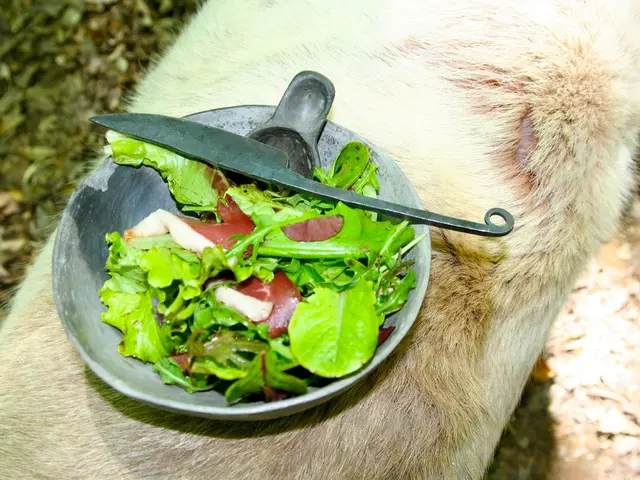Rapid and severe rosacea flare-up: Origins, signs, and remedies
Hey there! Let's dive into the world of Rosacea Fulminans, a rare and tough-on-the-skin condition that leaves your central facial area looking and feeling pretty unpleasant. You might know it as pyoderma faciale too. So, what's the big deal with this inflammatory skin problem? It explodes onto the scene rapidly with a range of unwelcome symptoms on your chin, cheeks, and nose - including painful, swollen, and Mermaid-level red pimples and nodules that can merge like celestial nebulae. Sounds fun, right?
This condition is more commonly found among female residents of the childbearing-age neighborhood. Similar to most mysteries, the root cause of Rosacea Fulminans remains elusive. Interestingly, recent studies suggest a link between the condition and things like inflammatory bowel disease or even pregnancy. It's also more likely to show up in folks who've previously experienced some form of rosacea in the past.
Stress, hormones, and certain medications can potentially nudge Rosacea Fulminans into existence. Some studies point to certain dietary factors triggering or worsening rosacea symptoms, although this information may not be specific to Rosacea Fulminans. Possible culprits include spicy foods, alcohol, foods with cinnamaldehyde (like chocolate, tomatoes, and citrus fruits), histamine-rich foods, hot drinks, and of course, the ever-popular Cupid's kiss (wine and aged cheese). Just remember, what applies to Rosacea Fulminans may not necessarily be the same for plain ol' rosacea or acne.
Now let's talk symptoms. Following the clues left behind by Rosacea Fulminans, you might find flushing and blushing, stinging and burning, localized skin color changes (a.k.a redness), and inflammation. Some people may also develop ocular symptoms like dry, burning, itchy eyes and sensitivity to light. Sick-day symptoms like fever and fatigue are rare.
Whether you're trying to tackle the condition with medical treatments or lifestyle changes, you might find success with oral isotretinoin - a prescription acne medication. Doctors may also prescribe corticosteroids. A 2016 case study showed that antibiotics combined with corticosteroids and lifestyle changes could help clear symptoms. In other words, remember your stress management techniques - like meditation, deep breathing exercises, regular exercise, and journaling. Adjusting your diet, like reducing alcohol intake, may help too. And, if you want to avoid upsetting your skin, stick with gentle skincare products for your precious face.
If you notice symptoms that go beyond typical rosacea or acne, or experience sudden onset or persisting symptoms despite trying medications, or develop eye irritation or inflammation - it's time to talk to a dermatologist or healthcare professional. It's essential to receive an accurate diagnosis and treatment ASAP to prevent complications and get on the road to symptom relief. And remember, your healthcare provider can provide personalized care tailored to your unique needs and circumstances.
In short, Rosacea Fulminans is a severe inflammatory skin condition. It primarily occurs in females of childbearing age, and its cause remains unknown. Treatment involves corticosteroids, isotretinoin, and sometimes stress management and dietary adjustments - particularly reducing alcohol intake. If you experience symptoms, don't hesitate to consult a healthcare professional for accurate diagnosis and treatment.
- Rosacea Fulminans, a severe skin condition, is frequently found in females residing within the childbearing-age neighborhood.
- Remarkably, studies have linked Rosacea Fulminans to inflammatory bowel disease or pregnancy, and it is more likely to manifest in individuals with a past history of some form of rosacea.
- Managing stress, adjusting hormones, and avoiding certain medications or dietary factors such as spicy foods, alcohol, cinnamaldehyde-containing foods, histamine-rich foods, hot drinks, wine, and aged cheese might help in preventing or minimizing the symptoms of Rosacea Fulminans.
- If you suspect that you might be experiencing more than typical rosacea or acne, or if your symptoms worsen despite medications, or if you develop eye irritation or inflammation, it's crucial to seek advice from a dermatologist or healthcare professional for a proper diagnosis and personalized treatment.








